Beauty professionals seem to adhere to one of two professional philosophies:
a.) Services must be performed as efficiently as possible to maximize income.
b.) Services take as long as it takes me to deliver a “superior” output so my clients feel valued.
For the purposes of this article, we’ll refer to Group A as “Flippers” and Group B as “Dummies” (just kidding, we’ll call them “Nurturers” and then we’ll talk about why both groups are dummies).
Flippers exist on one end of a spectrum, where service time and product overhead are obsessively managed.
Both must remain as minimal as possible. As a result, the client experience suffers, the output suffers, and attaining a loyal following can become nearly impossible, as most clients aren’t happy enough with a Flipper’s performance to return, so salons that focus heavily on speedy, cheap services often rely heavily on walk-in traffic. Locations that provide the kind of visibility and pedestrian activity required to sustain this business model often come with extraordinarily high rent amounts.
Flippers often charge rock-bottom prices (inflating them with “a la carte” add-ons), so they’re working three times as hard as they should be to make a minimal profit. As a result, they often find themselves engaged in arguments with clients at checkout (or at the station when they inform them that cutting their nails costs $5 extra, or a shampoo costs $3 extra). Clients don’t appreciate the deceptive pricing and nickle/diming, so they’re not likely to enjoy the experience whatsoever.
Employee turnover rates in these shops are high, client loyalty is almost nonexistent, and the entire situation is messy and stressful and thankless for everyone involved. (This is why we see so many poor employee reviews for businesses like GreatClips and so many poor client reviews for discount nail salons.)
“Nurturers” exist on the opposite end of the spectrum–only the best products will do and services take obscene amounts of time to complete.
Like the Flippers, Nurturers will also struggle. They may build a clientele after a time, but attaining profitability will be an uphill battle, and often one that will be ultimately lost.
Beauty professionals must learn how to balance in the middle of this spectrum.
These two groups of professionals can be found arguing the merits of their professional philosophy in online beauty communities, but I’m here to tell you they’re both wrong. I’m going to tell you why and how you can be better.
If you’re a professional who believes that service times are irrelevant, let me inform you:
This is an industry, not a charity.
Unless your lifestyle and your business are being subsidized by your limitless inheritance or astronomical lottery winnings, I think it’s fair to assume you actually want to make a living, perhaps even a profit. If that’s the case, you need to start treating your billable hours with more respect.
Delivering quality services and delivering timely services are not mutually exclusive concepts.
When consulting with Nurturers (whose primary complaints are “I’m working to death and not making any money!”), I find that they don’t understand their operational expenses or how their service time directly impacts their income every minute of every day. To a Nurturer, fifteen extra minutes is “no big deal,” but it is. It’s a huge deal.
Here’s a quick example from a friend of mine I’ll call “Portia.” Portia is a Nurturer. She spends way too much time on services and undercharges for her time. She asked me to help her restructure her prices. “My operational cost is $0.05 per minute, but I’m not sure where my money goes.” (Spoiler alert: She did the math wrong.)
These examples are color coded to indicate where changes were made.
- Red numbers indicate losses, or costs that haven’t been adjusted.
- Orange numbers indicate that a cost has been reduced, but isn’t quite perfect yet.
- Green numbers indicate gains, or costs that have been reduced as much as possible in the context of the scenario.
Calculations are based on a 50 week year in which 2,000 total billable hours are worked.
Portia rents a room for $550 per month. She works 40 hours a week (2,000 billable hours per year once you deduct her two weeks of vacation). This makes her hourly rent $3.30 per billable hour–this is where she obtained the $0.05 per minute figure.
Unfortunately, that’s not an accurate representation of her overhead because it fails to account for her other expenses, like:
- insurance ($600 per year)
- biannual professional license renewal ($37.50 per year)
- web hosting and domain ($150 per year)
- business cards, brochures, and marketing materials ($800 per year)
- loan repayment for equipment ($900 per year)
- Portia’s desired salary ($50,000 per year)
- client amenities ($600 per year)
- online booking system ($840 per year)
- online accounting system ($204 per year)
Total: $54,131
Rent: $6,600
Annual Overhead: $60,731
Let’s break that annual overhead down further, so Portia can fully understand her operational costs on a monthly, hourly, and minutely basis.
Monthly Overhead: $5,061
Hourly Operational: $30.36
Actual Per-Minute Operational: $0.51
Portia’s services are severely under-priced, and we haven’t even accounted for the products and disposables used in her services. (This is called the material cost-per-service, abbreviated to CPS.)
Portia’s most popular service, the Classic Pedicure, accounts for over 78% of her bookings.
Classic Pedicure: $40
Service Time: 75 minutes
Operational Overhead: $38.25
Product Cost Per Service: $3.30
Total Service Cost: $41.55
Profit/Loss: -$1.55
When Portia performs this service in 75 minutes, she actually loses money.
Step 1: Immediate Protocol Change
First, we implemented an immediate protocol change, carving 15 minutes off the service time, reducing Portia’s operational overhead by $7.65.
Classic Pedicure: $40
Service Time: 60 minutes
Operational Overhead: $30.60
Product Cost Per Service: $3.30
Total Service Cost: $33.90
Profit/Loss: +$6.10
This protocol change saves Portia “just” fifteen minutes, but that fifteen minute difference reduces her total cost from $41.55 per pedicure to $33.90 per pedicure. Instead of losing $1.55 per service, she’s making $6.10 in profit each service.
But that’s not the only way Portia’s income is increasing.
Prior to the protocol change, Portia’s schedule could only accommodate five clients per shift, from which she could earn up to $200 each day (equating to an $7.75 loss per day with her old protocol).
After the protocol change, Portia saved enough time to accommodate two extra clients per shift, bringing her daily income to at least $280 ($42.70 in profit per day).
That’s an extra $213.50 per week–a pretty substantial difference (not including the additional gratuity). Keep in mind that Portia’s annual expenses include her desired annual salary of $50,000 per year, which means that her new daily profit (potentially totaling $10,675 per year) is an additional bonus on top of her annual income.
There’s even more room for improvement in Portia’s scenario, but this illustrates my point:
In this industry, “a few extra minutes” can mean the difference between a profit and a loss.
In the hair sector, where product costs can vary wildly, this is extremely true, particularly when the owner hasn’t properly established prices and fails to control overhead.
Step 2: Reduce Costs
How can Portia make even more money without raising her prices? She can lower costs.
First, Portia’s pedicure scrub and butters were too expensive, as were her disposable items. By teaching her how to make her own products and connecting her with more affordable vendors, we cut her CPS considerably. Now, she uses $0.08 in scrub and butter and $0.80 in disposables for a total CPS of $0.88–a total savings of $2.42 per service.
Next, we evaluated the rest of Portia’s annual operating costs and identified places where she was overspending.
Insurance: $600
Professional License Renewal: $37.50
Web Hosting: $150
Marketing Materials: $800
Loan Repayment: $900
Portia’s Salary: $50,000
Client Amenities: $600
Salon Management Software: $840
Online Accounting System: $204
Rent: $6,600
Annual Overhead: $60,731
Portia’s a great consulting client. She’s really good at managing her overhead expenses, but her web hosting costs were needlessly high. Many booth renters and salon owners pay monthly subscription fees to use web building services like SquareSpace or Wix. If you can afford to have someone design a self-hosted WordPress site for you (or if you have the time to figure it out yourself), go that route. By moving her site to WordPress and hosting it herself, Portia saved $80 per year.
Her salon software costs could be eliminated, so she purchased salon management software instead of paying for a subscription. None of her clients were utilizing the online booking function anyway, so she was spending $70 per month for what essentially boiled down to a cloud-based calendar (she could have used Google Calendar for free, but she wanted the management features the salon software offers). This new software cost her $500, but she owns the system and it comes with a plethora of management tools and outperforms her subscription-based service by a wide margin.
In seven months, the new software will have paid for itself, and Portia will continue saving $840 per year.
Portia had already been using a free VOIP service (Google Voice) for her phone, so there were no phone expenses to eliminate, but that’s another unnecessary expense most business owners are burning money on. If you’re already paying for internet, there’s no reason you should be paying for a separate phone line. In the event of an internet outage, you can have the calls forwarded to your personal cell phone until the service is restored. On average, this saves booth renters and salon owners around $2,000 per year in phone costs, depending on the service provider they use and their service contracts.
By cutting just $920 in annual expenses, Portia’s income increased again.
Old Overhead: $60,731
New Overhead: $59,811
Old Hourly Expenses: $30.36/hr
New Hourly Expenses: $29.90/hr
Portia’s hourly expenses dropped to $29.90, a change of $0.46 per billable hour. How do these changes impact the bottom line on her Classic Pedicure?
Classic Pedicure: $40
Service Time: 60 minutes
Operational Overhead: $29.90
Product/Disposable Cost Per Service: $0.88
Total Service Cost: -$30.78
Profit/Loss: +$9.22
This makes Portia’s total cost for her most popular service $30.78–a $3.12 savings per Classic Pedicure. Her profit per Classic Pedicure is now $9.22. When we account for the new profit and the two hours saved each day by the protocol change, Portia’s potential daily profit increases to $64.54 per day.
That’s $368.80 per week.
$1,536.60 per month.
$18,440 annually.
…on top of Portia’s $50,000 salary.
That’s what profit is, guys. It’s extra money you make once your expenses are met and your salary is paid. Be smart and save it. Invest some of it wisely if that’s what you’re into.
Oh, but we’re not done with Portia.
Notice something? Portia’s prices haven’t changed yet.
And yes, they do need to change. Portia sterilizes her implements. She’s extensively trained and fully booked. She delivers a spectacular service and her prices just aren’t an accurate reflection of the service’s value. Her clients aren’t just willing to pay more, they’re insisting that she charge more. Many are leaving her tips in excess of $15 per service and several have stated that they feel “guilty” because she’s priced so low.
Step 3: Increase Prices
After analyzing her market, it’s clear Portia should be charging $50 an hour for her time. Theoretically, she can charge $55 because she lives in an affluent area, but she wants to stay competitive, so we’ll start with an increase to $50. How does that impact Portia’s numbers?
Classic Pedicure: $50
Service Time: 60 minutes
Operational Overhead: $29.90
Product/Disposable Cost Per Service: $0.88
Total Service Cost: -$30.78
Profit/Loss: +$19.22
Portia’s potential daily profit increases by $134.54 per day.
That’s $672.70 per week.
$2,802.92 per month.
$33,635 annually.
…on top of Portia’s $50,000 salary.
Reviewing the Changes
Prior to making any changes, Portia was losing $1.55 per Classic Pedicure–a loss that was being offset by her gratuities.
Annual Loss Before Changes: -$1,937.50 (not including 2 hours of lost productivity per day)
Annual Profit After Protocol Change: $10,675
Annual Profit After Overhead and CPS Reduction: $18,440
Annual Profit After Price Increase: $33,635
Total Difference: +$31,697.50
Time matters. Expenses matter. Don’t set your prices on a whim or base them on what others are charging. Never forget to include your salary. Always seek out cheap or free alternatives to expensive ongoing subscription services.
Know your numbers.
Are you a renter like Portia who needs to do some math? If so, The Microsalon Owner’s Complete Business Toolkit is made just for you. You may also benefit from my book, The Beauty Industry Survival Guide.
If you’re a salon owner with employees, The Salon Compensation and Pricing Megakit contains everything you need to evaluate your costs and set your prices appropriately. My book, Salon Ownership and Management: The Definitive Guide to the Professional Beauty Business, also has tons of information for salon owners of all types.
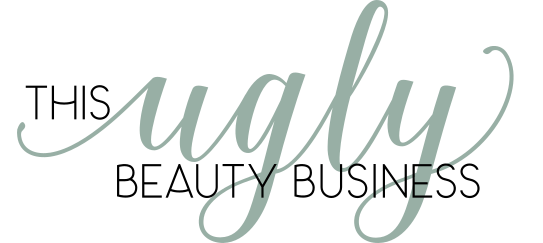
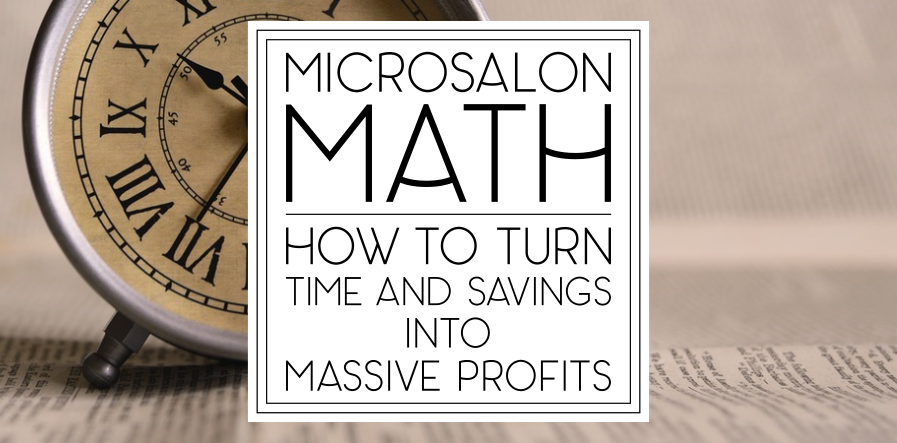

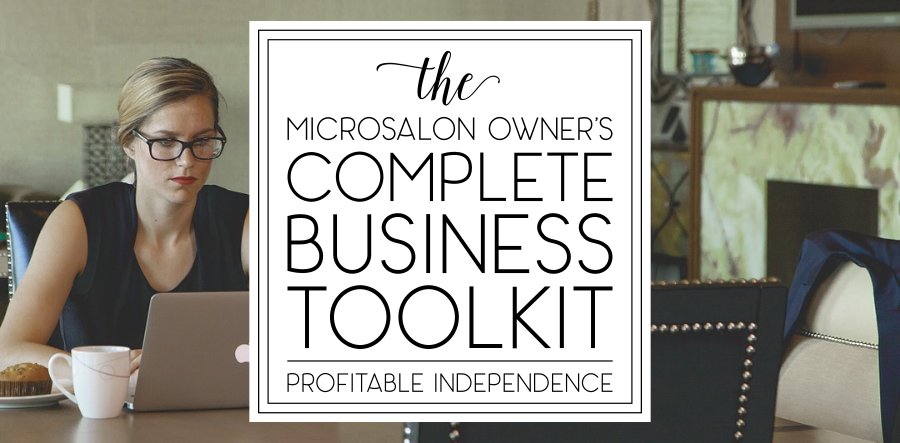
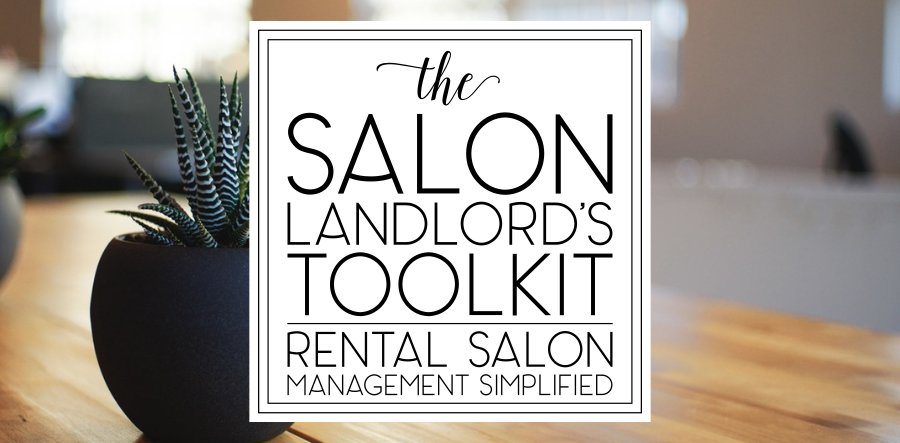
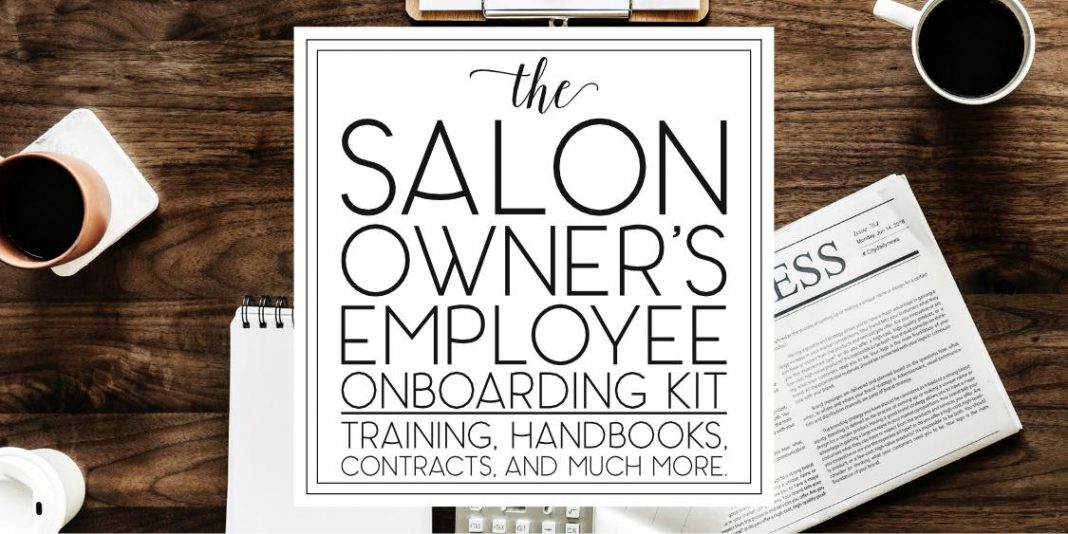

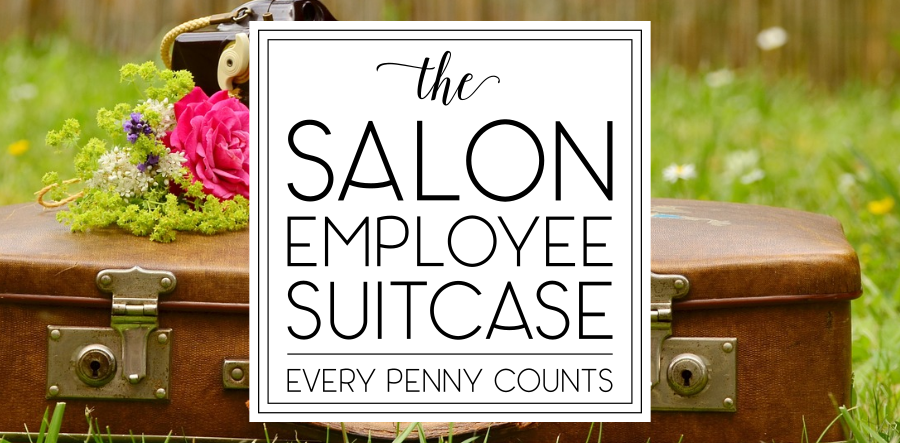

9 Responses
Fantastic Article
Great breakdown! I have a question. Do you disagree with add-ons? Or just excessive ones? For example, should gel polish removal be included with the next gel polish service or should that be an add-on?
That’s a personal choice. For me, I separate removal and consider it a separate service. (This is part of the reason I eradicated online booking and absolutely don’t advise any of my consulting clients to use it. Salon clients will jack your book up if they don’t understand what they really need.)
Part of the reason for this separation is that some clients won’t require removal, so including the time into the gel manicure could cause you to lose 10-15 valuable billable minutes. It’s better to keep your books tight so you can maximize your daily earning potential.
Buying your book off of Amazon now. 🙂
Hi Tina,
I would like to thank you very much for the great article below. I am in a middle of starting up my own company, and the detail of your narratives makes my work easier to understand as I am not a nail technicians, makeup artist or hairstylist. As a future owner, it is important for me to value my services and my employees, and thanks to you I have a clearer vision now.
I still have a question though, do you have any recommendations on where to look to find the average product cost of each service: basic and deluxe mani, basic and deluxe pedi (deluxe should be around $3.30 if I recall your blog post correctly), also for gel, hairstyling, and makeup. I am doing my financial projections right and the more information I can get, the better.
Also, are you consulting? or maybe coaching? I will interested in knowing your offer if so.
Again, thank you so very much for all the resources that we can find on here. That is priceless and HIGHLY appreciated.
Hi Charlotte! I do consult, but because I’m one person, my schedule fills up really fast. I’m currently booked with ongoing projects through December. I do have availability for hourly-based appointments on an as-needed basis though.
I can tell you that you’re better off sourcing vendors and doing CPS evaluations for each service based on actual numbers. Salon owners can’t be relied upon to report accurately, as it’s not often they actually know their own costs. For hairstyling, costs vary widely depending on the density and length of the hair, as well as the service being performed. Unlike many business consultants, I recommend highly against doing any performance projections (trying to assess how much money you’ll make), because they’re based on fictional numbers and uninformed sales estimations. If you’re projecting expenses, *totally* do that. Find product lines, source vendors, break down your costs per volume/piece, and you’ll get a ballpark estimation of where your CPS will fall. For services like hair color–just plan to add on additional charges for additional product and time use. 🙂
Thank you very much for your quick feedback. It was exactly what I have started to do. I am not worried about the time it is taking me, but more about thinking accurately about the vendors and product lines. Thanks again for your precious help. You truly made my day. Have a great one. I will be in touch.
You’re welcome! 🙂
This article was great Thank you 😊